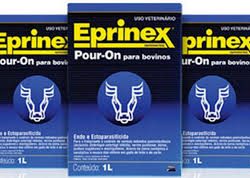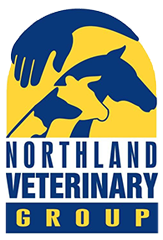Think Smarter in a Lower Payout Season – Get Fertility Fit
(Our thanks for Merial for the use of this article)
This season it’s more important than ever to maximise any return on investments and animal health is no exception. In dairy cattle, the application of a planned animal health treatment should aim to maximise milk production. The return on investment will vary widely between treatments and depends on the cost of treatment, the expected production benefit and farm management practices. In a season like this there’s a temptation to remove animal health treatments to get an instant improvement on the balance sheets. However, there may be many hidden costs in removing these treatments and careful, smart thinking is required.
What is Fertility Fit?
It will soon be mating time. A time of year with many of you working very long hours, with little down time. Having a herd that is ‘fertility fit’ at the start of mating will improve your submission rates, conception to first service, 6 week in calf rate and make the period a much happier time for all on farm. Fertility fit cows are healthy, have no uterine infection and have a body condition score (BCS) of 4.0 and above (1st and 2nd calvers, 4.5) and have not lost more than 1 condition score since calving. Cows that lose more than 1 BCS within 30 days of calving are almost twenty times more likely to have a longer period from calving to first ovulation (Opsomer et al., 2000).
Uterine Infections
Following calving the uterus becomes contaminated with bacteria, and although many animals can clear this contamination, infection persists in up to 20% of cows as endometritis (Sheldon et al., 2009). Uterine infections contribute to reduced fertility via a number of mechanisms such as reducing the cows own production of prostaglandin (PGF). Metrichecking the herd regularly over the calving season and treating appropriately the cows that require treatment should reduce the number of cows with endometritis at the beginning of mating.
Energy Regulates Reproductive Success
Energy intake, BCS and milk yield interact to affect energy balance in dairy cows (Crowe et al., 2014). There are many reasons why energy regulates reproductive success. One reason is a substance called insulin growth factor (IGF-1). Cows that are severely ‘milking off their backs’ have less IGF-1 in their blood stream. Low IGF-1 concentrations before calving and in the weeks following calving have been linked to reduced conception rates (Diskin et al., 2006, Taylor et al., 2006). It should also be noted that the metabolic status associated with high rates of BCS loss increases the risk for milk fever and subclinical ketosis (Crowe et al., 2014). Something as simple as drenching your cattle after calving can reduce the amount of body condition loss seen at this critical time. For example, the original eprinomectin formulation, EPRINEX, has numerous peer reviewed global trials indicating the benefits of using a quality pour on eprinomectin drench for improved appetite, production and conception. Using EPRINEX pour-on increases appetite in cattle so that they graze for almost an hour longer each day. This extra energy intake reduces the energy gap and improves conception to first service and 6 week in calf rates as well as boosting milk production (Sanchez et al., 2002).
Clearly it is important that cows have a prompt resumption of cyclicity after calving, exhibit overt heat and have a strong likelihood of establishing and maintaining a pregnancy after insemination (Butler, 2014). If you can strive to get your herd fertility fit before the start of mating you have a much better chance of achieving this.
References
Brownlie, T.S., Morton, J.M., Heur, C., McDougall, S. 2015. Effects of a group-based reproductive management extension programme on key management outcomes affecting reproductive performance. The Veterinary Journal. 203 (177-186).
Butler, S.T. 2014. Nutritional Management to optimize fertility of dairy cows in pasture-based systems. Animal. 8:s1 (15-26).
Crowe, M.A., Diskin, M.G., Williams, E.J. 2014. Parturition to resumption of ovarian cyclicity: comparative aspects of beef and dairy cows. Animal. 8:s1 (40-53).
Diskin, M.G., Crowe, M.A., Boland, M.P., Roche, J.F. 2000. Effect of exogenous LH pulses on the fate of the first dominant follicle in postpartum beef cows nursing calves. Journal of Reproduction and Fertility. 118 (9-17).
Opsomer, G., Grohn, Y.T., Hertl, J., Coryn, M., Deluyker, H., Kruif, A. 2000. Risk factors for post partum ovarian dysfunction in high producing dairy cows in Belgium: a field study. Theriogenology. 53 (841-857).
Sheldon, I.M., Cronin, J., Goetz, L., Donofrio, G., Schuberth, H.J. 2009. Defining postpartum uterine disease and the mechanisms of infection and immunity in the female reproductive tract in cattle. Biology of Reproduction. 81 (1025-1032).
Taylor, V.J., Beever, D.E., Bryant, M.J., Wathes, D.C. 2006. Metabolic profiles and progesterone cycles in first lactation dairy cows. Theriogenology. 31 (1-18).

